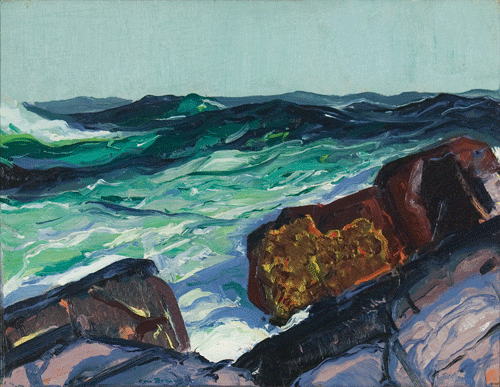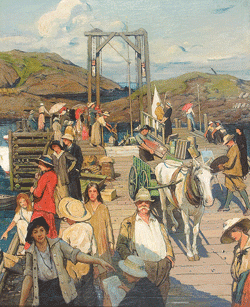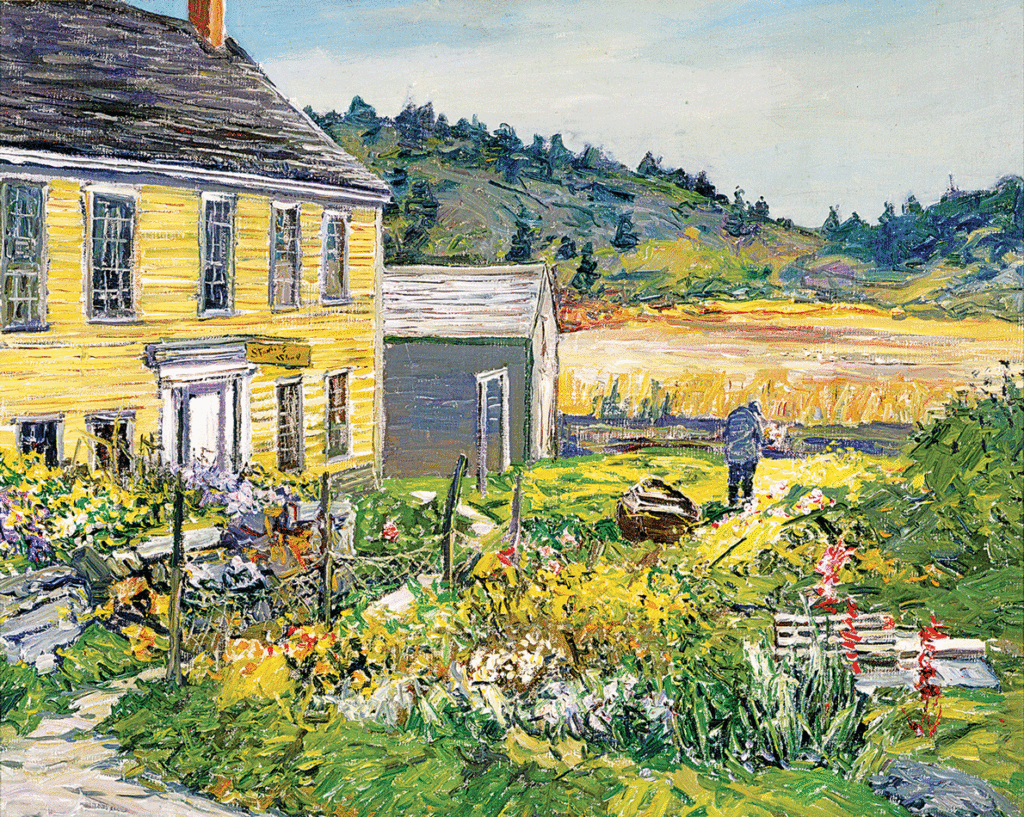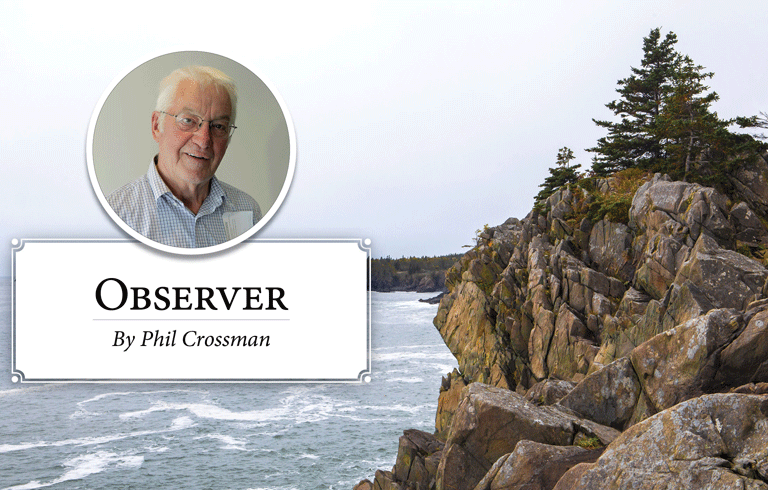Five years ago Monhegan marked the 400th anniversary—the quatercentenary—of English explorer Captain John Smith’s visit to the island. This year the island celebrates another milestone, one of shorter duration but no less worthy of commemoration: the Monhegan Museum of Art and History’s half-century mark.
The star of anniversary events is the exhibition “An Island Treasure: Celebrating 50 Years of the Monhegan Museum” (through Sept. 30). The museum’s curatorial team has assembled a kind of “greatest hits,” 80 works in all from the permanent collection. You’ll find Aaron Draper Shattuck’s “On the Maine Coast,” 1858-1859, perhaps the first painting of the island by a visiting artist, and Rockwell Kent’s “Village at Night,” ca. 1950, a view of Monhegan’s “skyline” beneath a radiant sky.
And there are ample surprises, from award-winning actor Zero Mostel’s vibrantly abstract “Harbor Reflections” from the 1950s-1970s, to renowned sculptor Louise Nevelson’s “Cryptic XXX,” 1966. What, one might ask, is this arrangement of painted wooden pieces doing in the collection? The artist, who lived in Rockland early in her life, told her biographer that the driftwood shack of Manana’s hermit, Ray Phillips, was the original source of inspiration for her constructions.

George Bellows, “The Iron Coast, Monhegan”
The museum provides an almost unequaled opportunity for the art lover: to walk out its doors and be surrounded by the subjects represented within. There before you is the island’s “iron coast” as depicted in George Bellows’ 1913 painting; a group of painters set up on Swim Beach as seen in Don Stone’s ca. 2000 study; or the colorful lobster buoys found in Jacqueline Hudson’s 1971 oil. And there is the museum itself, rendered in a lovely undated watercolor by Carl Hiller.
Where there’s water there’s apt to be watercolor, and wonderful is its range as presented in the anniversary show. On the one hand, you have the realism of Samuel Peter Rolt Triscott’s ca. 1895 painting of the Trefethren barn and Starling fish housesor Ruth Boynton’s stunning rendering of Pebble Beach from 1996. On the other, Lawrence Goldsmith, Alan Gussow, Hans Moller, Yolando Fusco, and Ted Davis employ diverse abstracting approaches to add energy to their island subjects: rock ledges, a tide pool, the harbor, a crevasse, and a seagull, respectively.

“At the Dock,” 1916, Robert Van Vorst Sewell
The museum has had some wonderful benefactors over the years, including many artists and their families. Scanning the show’s checklist, several names recur. Remak Ramsey, the stage, film, and television actor, has donated a number of masterpieces, including two images of the crow’s nest, by Andrew Winter and Sears Gallagher. A favorite motif for artists, this distinctive avian gathering place inspired the Monhegan Brewing Company’s Crow’s Nest IPA.
Another benefactor was the philanthropist Elizabeth Noyce (1930-1996), who left the museum several iconic images, including impressionist Edward Redfield’s “The Toy Maker’s Home,” 1928, a relatively rare Monhegan painting showing no water. Noyce also provided a major matching grant to help build the museum’s state-of-the-art gallery and storage in 1997. Another matching grant is now on the table: Jamie and Phyllis Wyeth are providing a $1-million challenge toward a $4-million fundraising campaign.
Thanks to the publication of the impressive The Monhegan Museum: Celebrating Fifty Years, we now have a full and detailed history of the institution and its holdings. In addition to reproducing the works in the anniversary exhibition, the book covers the history of its collection and buildings, including an essay on its architecture by historian Earle Shettleworth and an account of the challenges of conserving the art by chief curator Jennifer Pye.
Robert Stahl, the museum’s associate director, offers a ground-breaking account of the legacy of painters Rockwell Kent and James Fitzgerald whose lives overlapped on the island. As director of the museum’s James Fitzgerald Legacy, Stahl has been busy this year. He published a major monograph, James Fitzgerald: The Drawings and Sketches, and organized an exhibition of Fitzgerald’s work now on view at the painter’s home and studio on Horn Hill, which is maintained by the museum as a supplemental campus.
Because of the museum’s policy to collect only the work of deceased artists, you won’t find any of the hundreds of images produced each year as artists return to or discover this “rock in the North Atlantic 12 miles off the mid-coast of Maine,” as longtime museum director Ed Deci calls it in the anniversary publication. There is a lot of art on that thar island and the Monhegan Museum is doing an admirable job of preserving and highlighting its history.
Carl Little is a former board member of the Monhegan Artists’ Residency. He lives on Mount Desert Island. His latest book, written with his brother David, is Paintings of Portland.





